
Conservation Considered in Largest Army Training Exercise in Adirondack Park
By: John Sheehan - Adirondack Council Director of Communications
Thursday, April 12, 2018
From April 10 through 18, Adirondack Park visitors and residents are likely to notice military training exercises happening around them. The exercises involve several types of military aircraft and hundreds of soldiers on the ground. Army officials said it is the largest such training exercise it has ever conducted in the Adirondack Park.
The U.S. Army’s 10th Combat Aviation Brigade (10th CAB), stationed at nearby Fort Drum, will be conducting military training exercises inside the Adirondack Park to train helicopter pilots in the use of rough terrain to avoid being shot down.
Thanks to the Army’s cooperative spirit, pilots won’t just be avoiding simulated small arms and anti-aircraft fire. Their training mission will also involve avoiding sensitive environmental locations, including known wildlife areas and – to the extent possible - designated Wilderness Areas.
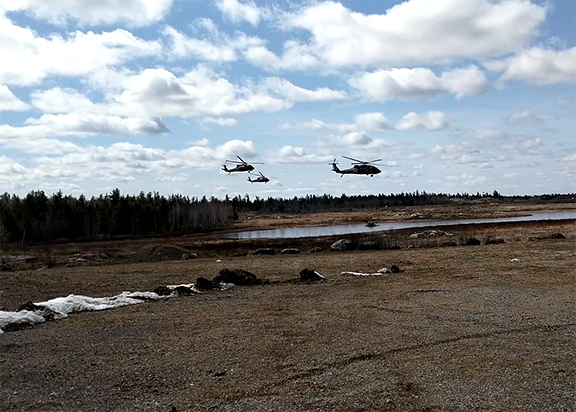 Helicopters taking off for training
Helicopters taking off for training
The idea behind the Army’s training mission is to give soldiers on the ground more experience in detecting and destroying enemy aircraft, while simultaneously teaching pilots how to fly slowly at low altitude, to evade mobile anti-aircraft weapons, such as shoulder-launched rockets. Personnel on the ground will try to “shoot down” helicopters and Army drones with simulated rocket launchers that throw a radio wave rather than a projectile. No live ammunition will be used.
According to the Army’s public briefing, jet-propelled Army helicopters have tended to operate at relatively high elevations and high speeds to avoid small arms fire. However, Russian-made, heat-seeking rocket systems are becoming more common everywhere the Army operates, officials explained, noting that the tail exhaust on a Black Hawk is close to 900 degrees Celsius, making it an easy target. The training missions will also be conducted at night to give pilots low-altitude experience with night-vision equipment.
The Adirondack Park has been a part of the military’s training programs for decades and hosts training missions from military bases all over the Northeast. The Air Force and Air National Guard conduct routine training missions with piloted aircraft and military drones that fly over the Park nearly every day. Those training routines are adjusted every five years, after consultation with a civilian advisory committee.
Conversely, the Army has tended to use single locations inside the Adirondack Park for one-day training missions. Environmental impacts from the Army’s prior single-day, single-location missions tended to be light and short-lived. Nearly all of those previous missions involved only private property. The Army had also conducted prolonged exercises on Fort Drum’s 170,000 acres. Today, even that is too small for realistic long-range training, officials said.
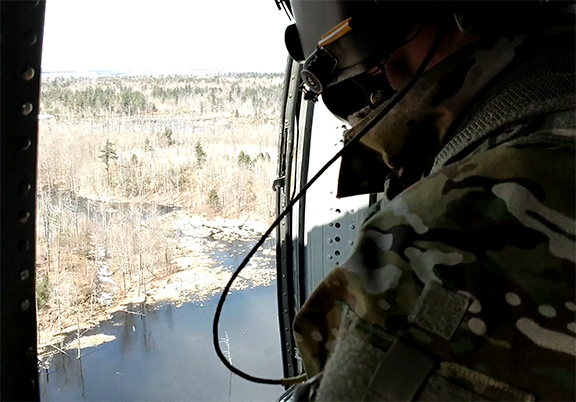 A view from the sidedoor
A view from the sidedoor
What the Army needed was training that involved operations covering dozens of miles, incorporating all types of terrain and weather, both in broad daylight and at night. Recognizing that the Army may be unaware of the Adirondack Park’s conservation needs, the Adirondack Council offered its help in explaining them.
The Adirondack Council has been a member of the Governor’s Ad Hoc Committee on Military Overflights and Training since it was established in the early 1990s. The Army has never submitted its one-day training plans to the committee. Given the length and scope of this training mission, the Council suggested that a briefing would be appreciated. Army officials invited the Council to participate on April 9.
The Adirondack Council’s goal is to help the Army avoid conflicts with Park residents, local businesses, visitors and wildlife. We have some experience in that field. In our work with the Air Force and Air National Guard, the Council persuaded both branches of the military to avoid targeting private homes and to treat Adirondack Wilderness Areas with the same level of respect afforded federal wilderness during military training exercises.
After hearing our request some 25 years ago, both branches agreed to keep their routine fighter and bomber jet airplane training at least 2,000 above the ground over Adirondack Wilderness Areas. Both use the Adirondacks to train pilots to fly routes using only their navigational instruments and to attack targets at the live-fire training areas at Fort Drum.
Unlike other areas of the six-million-acre Adirondack Park, the 1.1 million acres of Adirondack Wilderness is off-limits to all motorized traffic. That constitutes about one-third of the “forever wild” Forest Preserve. For civilians, it is illegal to drive a vehicle or operate a radio-guided aircraft (drone) from an Adirondack Wilderness Area. However, the military is not obligated to obey state laws and land-use regulations.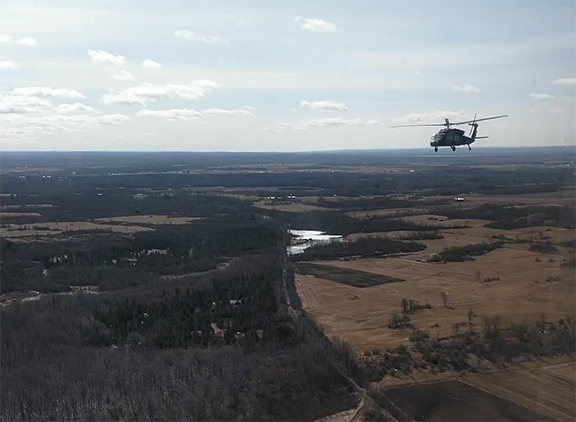
The Air Force and Air National Guard agreed to respect Wilderness because they wanted to be good neighbors. They said they hoped to protect wildlife while providing valuable training that was not possible in other parts of the country.
While it has not yet put its assurance into writing, I am happy to report that the Army has agreed to respect Wilderness and wildlife as well. On April 9, officials from the 10th CAB officials heard our concerns and requested mapping information from the NYS Dept. of Environmental Conservation regarding Wilderness areas and important bird habitats. DEC Region 6 Director Judy Drabicki provided Major Josh Meyer with maps showing the Wilderness areas the Army should try to avoid, as well as the known nesting sites for rare and sensitive species such as the bald eagles, peregrine falcons and ospreys.
Major Meyer explained that restricting certain areas wouldn’t harm the training mission. To the contrary, he said placing certain areas off-limits would actually enhance the authenticity of training exercises. In combat, soldiers and pilots would be required to avoid areas known to have dangerous terrain, or conditions, or places where American troops would be especially vulnerable to attack. By treating known sensitive wildlife locations like these combat hazards, both conservation and military training can be accommodated.
Shortly after 10 a.m. on Monday, briefing participants took off in four Army Black Hawk helicopters from Fort Drum’s Wheeler-Sack Army Airfield, near Carthage. Each helicopter had a four-member Army flight crew, six local officials or community leaders and an Army helicopter pilot who acted as our tour guide.
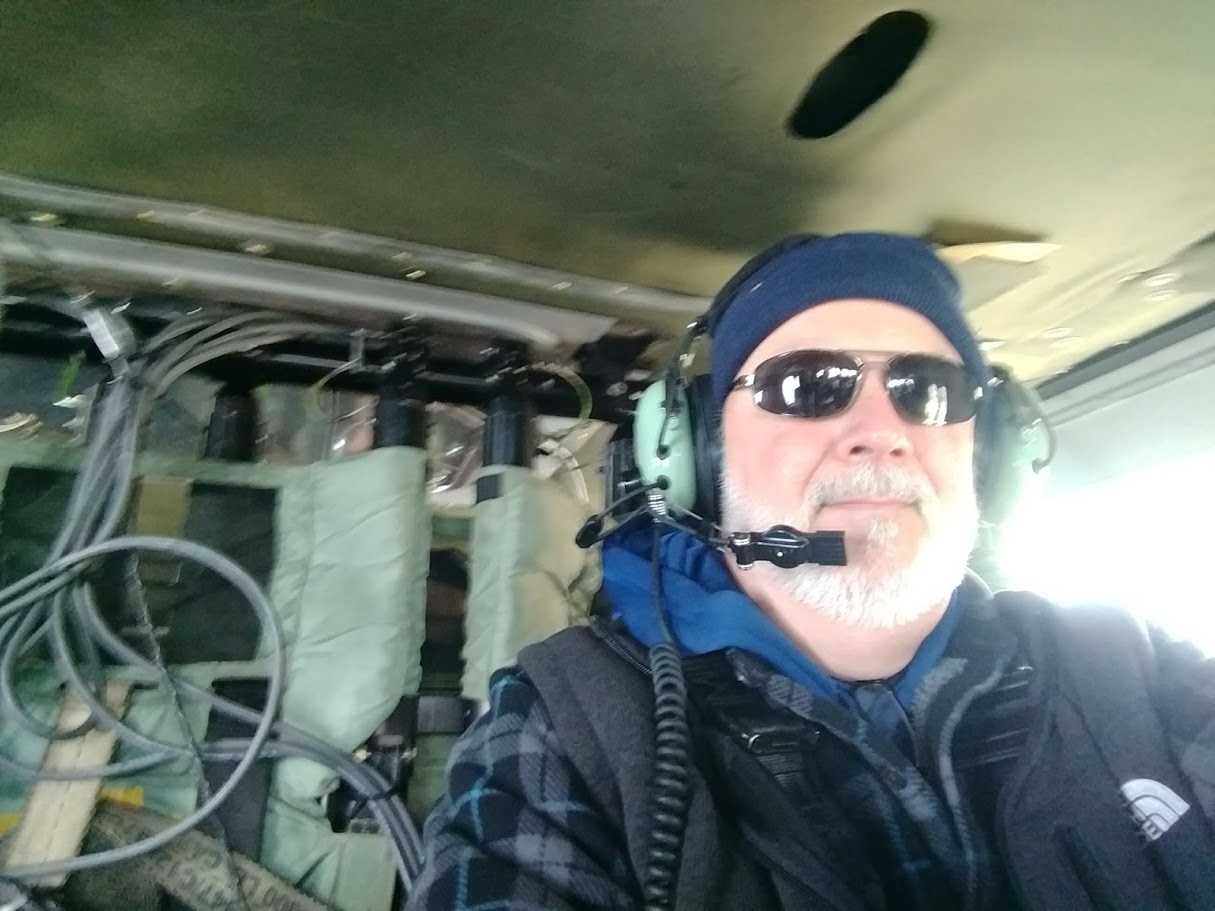 Adirondack Council's Director of Communications John Sheehan in the Army Black Hawk helicopter
Adirondack Council's Director of Communications John Sheehan in the Army Black Hawk helicopter
We flew at various heights out to a bombing range, shelling range and demonstration area not far from the Oswegatchie River. The site was familiar. I had visited once before as a guest of the Air National Guard’s 174th Attack Wing about a decade ago. The 174th owns the buildings in the compound next to the 10th CAB’s observation tower. Back then, I was witnessing the first drone training missions over the Adirondacks and reviewing plans for training with new F-35 fighter jets.
On Monday, I was standing on freshly leveled ground that was littered with shards of metal and rifle shell casings, along with about 30 county officials, community leaders, state officials and journalists. We watched as pilots flew Blackhawks over the range at a few thousand feet, and then progressively lower, down to about 20 feet above the treetops, at speeds up to 120 knots (138 m.p.h.). As the heights decreased, so did the sound of the approaching aircraft and the time available to soldiers on the ground to target the aircraft and fire a weapon.
That morning, 10th Mountain Division soldiers and CAB personnel were sent by truck from Fort Drum to two locations in the Adirondack Park, as the demonstration briefing was underway. The two locations were the Tahawus Mine (a former iron mine in Newcomb owned by Paul Mitchell of Tupper Lake) and a similar staging area near Cranberry Lake. They were met by additional troops who flew in on Tuesday.
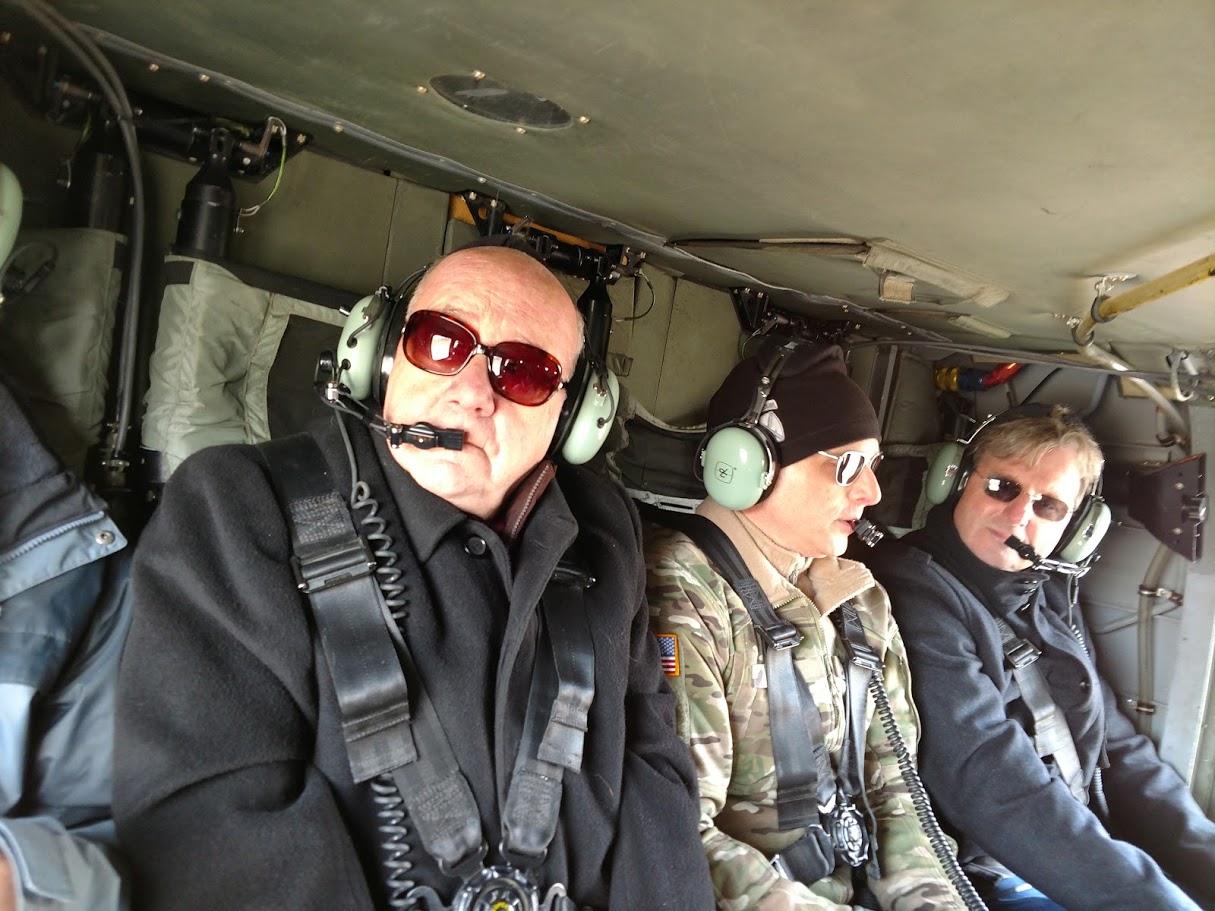 Fellow Passengers
Fellow Passengers
From there, they were expected to occupy their sites for a time and work their way back to Fort Drum, through the Adirondack Park, simulating fighting and avoiding being detected, both day and night. In an effort to avoid startling the public, Army officials had briefed police and fire officials and local governments in the communities where the training will occur during the weeks leading up to the training mission. Some information was also given to the news media to help prevent surprise encounters with the public.
Back at Fort Drum on Monday afternoon, DEC Regional Director Drabicki and I compared notes on the trip with Major Meyer, who said he is an avid skier and nature lover. It is unclear whether this is a one-time training exercise, or whether the Army will want to do it again. Either way, Monday’s discussions provided both the Army and conservationists an opportunity to communicate, cooperate and avoid future conflicts.
The Adirondack Council is grateful to the military for treating the Adirondack Park like the national treasure that it is, and for taking the Adirondack Council’s concerns to heart.
Members of the community with questions during Falcon’s Peak can contact the exercise operations center at 315-772-1048.
If you are not comfortable contacting the military directly, you can send me an email. It is also my duty as a member of the military training advisory committee to seek public input from anyone who sees something happen during the training exercises that is harmful to the Park’s ecological health or to public health or public welfare. You can reach me by email at: jsheehan@adirondackcouncil.org or at my office in Albany (518-432-1770, ext. 203).
|





